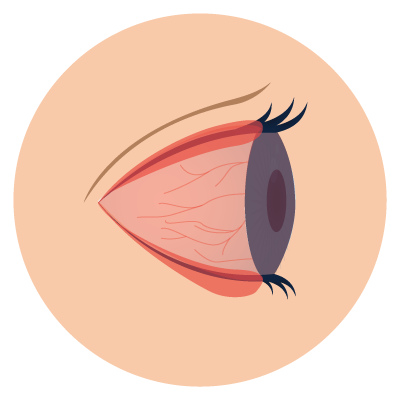When you choose to correct your cataracts, you can also choose to correct your astigmatism with an advanced technology lens, just like Lorrie did. With clearer, sharper distance vision after cataract surgery, you may even reduce your dependency on glasses and enjoy more activities, like driving, with clearer vision.
How is this possible? In one procedure, the cloudy lens in your eye is replaced with a new artificial lens, known as an intraocular lens (IOL) that is also designed to correct astigmatism.
Continue reading to learn more about the basics of cataract surgery and the different options that may be right for you.
Get started on your journey with a free kit
Understanding cataracts and your surgical options are the first steps in feeling more confident about an upcoming surgery.
Did You Know?Cataract surgery is the most common surgery performed in the US today1
Cataracts can’t be prevented, but they can be treated with surgery and it's one of the safest surgeries performed2
Clouded, dim, or blurred vision can be a sign of cataracts3

In an AARP survey of 250 cataract patients, 4 out of 5 said their experience with cataract surgery was easier than they expected4

Receive more information sent directly to your inbox
When it comes to correcting cataracts, you may have options. Talk to your eye doctor about how you are seeing things and your options for clearer vision.
The "eye health formula" discussion above is for information purposes only. Everyone's eyes are different, and the condition of your eye has a big impact on the correct lens option for your cataract surgery. Your surgeon and his/her staff will help you choose the right option for you and your eyes.
Realize the difference that correcting your cataracts and astigmatism at once can make.
Talk to your surgeon about how you could achieve your best vision possible after cataract surgery. Remember, you have a selection of lenses and you and your doctor choose what’s right for your vision and lifestyle needs.
Not ready for surgery? It's never too early to start the conversation and learn about your lens options. Talk to your eye doctor about how you can correct your cataracts and possibly certain other vision issues in the future.
Planning and learning about your cataract procedure can help you feel confident about your future vision. The procedure itself usually takes around 30 minutes with an hour or two in recovery.
You can generally expect your surgery to follow these steps:
A minor incision will be made to the cornea using a handheld blade or a laser
A small probe will break up and remove your cataracts, and a new lens will be placed in your eye
Generally, no stitches are required as the incision is so small
A bandage or patch will be placed on your eye, and can usually be removed within just a few hours
Cataract surgery recovery times are different for everyone, but typically you should be able to see by the next day. You can expect to resume most of your normal activities within a day, although most surgeons suggest that you don’t drive for up to 24 hours after the procedure
After the surgery, your surgeon will usually talk to you about:
Any medications he or she may prescribe you
Instructions on how to care for your eye
Arranging a follow-up meeting the next day
A stinging or gritty feeling after surgery is normal, though after 1 or 2 days any moderate discomfort should disappear5. Avoid rubbing or putting pressure on your eyes. Reading, walking, watching TV, or other light activities are okay, but you should avoid strenuous activities, such as heavy lifting, for at least a week.
Common risks of cataract surgerySign up to receive educational materials, appointment reminders, and more.
For more information on cataracts, go to myeyes.com/cataracts
References
1. Majka C, Carlson A. Ophthalmic Pearls: Cataract: When to Use Multifocal Intraocular Lenses. American Academy of Ophthalmology website. Available at http://www.aao.org/publications/eyenet/200609/pearls.cfm, Accessed May 9, 2016.
2. American Optometric Association. Cataract Surgery. American Optometric Association website. 30 July 2016. Available at http://www.aoa.org/patients-and-public/eye-and-vision-problems/glossary-of-eye-and-vision-conditions/cataract/cataract-surgery?sso=y. Accessed May 9, 2016.
3. Mayo Clinic Staff. Cataracts: Symptoms. Mayo Clinic website. July 30, 2013. Available at http://www.mayoclinic.com/health/cataracts/DS00050/DSECTION=symptoms, Accessed July 30, 2016.
4. Data on File. AARP/Alcon Vision Survey, April 2013.
5. Facts About Cataract: Cataract Defined. National Eye Institute website. September 2009. Available at http://www.nei.nih.gov/health/cataract/cataract_facts.asp, Accessed May 9, 2016.
Common risks of cataract surgery:
While cataract surgery is considered one of the safest surgical procedures around2, there are always risks that need to be considered. The most common risks are: infection; inflammation; tearing of the posterial capsule of your lens; visual effects like seeing halos around lights, glare; leaking from the incision; secondary cataracts or cystoid macular edema. Your surgeon will discuss your specific risks based on the current condition of your eyes.
Common risks of cataract surgery:
Cataract surgery is considered one of the safest surgical procedures in the US2. But some common risks are infection; inflammation; tearing of the posterial capsule of your lens; visual effects like seeing halos around lights, glare; leaking from the incision; secondary cataracts or cystoid macular edema. Your surgeon will discuss your specific needs and risks, based on the current condition of your eyes, before your surgery is scheduled.
Common risks of cataract surgery:
Cataract surgery is considered one of the safest surgical procedures in the US2. But some common risks are infection; inflammation; tearing of the posterial capsule of your lens; visual effects like seeing halos around lights, glare; leaking from the incision; secondary cataracts or cystoid macular edema. Your surgeon will discuss your specific needs and risks, based on the current condition of your eyes, before your surgery is scheduled.